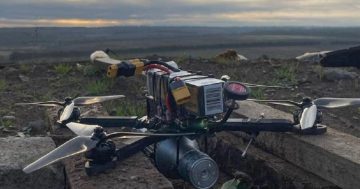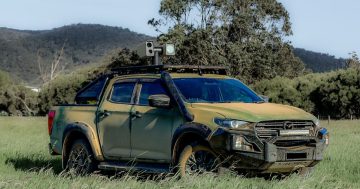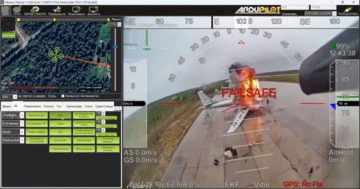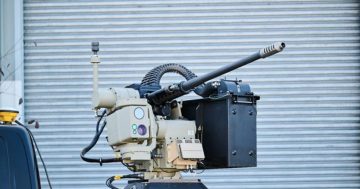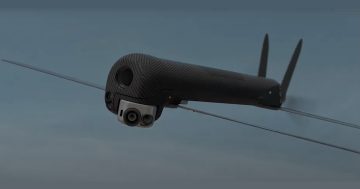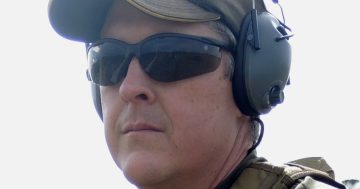
Launch event MC WGCDR Keirin Joyce, author Dr Oleksandra Molloy, and UNSW Canberra Head of School of Science Professor John-David Dewsbury at the research paper’s launch. Photo: UNSW Canberra.
The use of drones in warfare has totally revolutionised the way current wars are (and future wars will be) fought, a study by a Canberra-based academic has found.
Authored by UNSW Canberra academic Dr Oleksandra Molloy and commissioned by the Australian Army Research Centre, the study entitled Drones in Modern Warfare: Lessons Learnt from the War in Ukraine says Australia and other western powers must learn from experiences from the war in Ukraine.
It says the war in Ukraine has revolutionised how modern wars are fought, especially in the use of drones and the low-cost, high mobility strike capability they offer. The report contains recommendations that will assist the ADF in understanding the strengths and limitations of drones in combat, and may inform its future strategies, training and investment.
As part of her research Dr Molloy – who was recently named as the winner of the 2024 Women in Defence Awards in the Research and Development category – conducted interviews with experts on the ground in Ukraine and in Australia.
“The war in Ukraine is the first war that has seen drone warfare on such a large and comprehensive scale,” she said, adding that the most notable development was the shift to small, simple drones that could easily be transported and used by forces.
“Drone warfare has become less about technological sophistication and more about the ability to deploy high volume, low-cost technology,” she added.
“Many of the drones used in the current conflict can be operated with a mobile phone and can be armed with a hand grenade, and can cause significant destruction.
“Their availability, rapid development, as well as their ease of deployment and use, now make them indispensable in military operations,” she said.
“The war has demonstrated the importance of the small drone systems. Large systems are typically no longer used, as they are easier to detect and shoot down, and the cost is high.”
The use of thousands of consumer-grade drones in Ukraine has seen rapid advances in being able to track enemy movements, identification of targets, and the ability to drop small explosives with extreme precision.
But it’s not just small flying drones that have been used. The report says there has also been a significant escalation in the use and ability of land- and sea-based drones, some of which have been used to launch attacks on enemy ships, have supported logistics, and have been used to lay and scan for mines.
The report says Australia’s 2024 National Defence Strategy and the 2024 Integrated Investment Program has committed $300 million over the next four years and $1.1 billion over the next decade to drone and counter-drone capabilities.
By comparison, Ukraine is estimated to have spent $2 billion on drone production in 2024 alone.
It says that, like Ukraine, the US, UK, and some European and Asian powers have recognised the importance of the use of drones in defence, and are introducing drone strategies. It says some have created Joint Drone Commands, and are writing or rewriting doctrines and integrating them in training.
Dr Molloy said the ADF needed to heed the lessons of the war in Ukraine and be prepared to change its approach. The Australian Defence Force has several small, medium and large air, land, and maritime drone projects underway, but is yet to commit to many projects at scale.
“By maintaining an accelerated cycle of innovation and learning from Ukraine, nations such as Australia have the opportunity to stay ahead of their adversaries, ensuring that they are prepared to meet contemporary and future conflict strategic challenges.”
The paper was launched at an event in late October which was attended by Ukraine’s Ambassador to Australia, Vasyl Myroshnychenko.
The ambassador said Ukraine had displayed innovation in the use of drones to defend itself against Russia, and thanked Australia for its support in driving its defence force forward.
“I am grateful to the government of Australia for joining the Drone Coalition for Ukraine, led by the UK and Latvia, and for making contributions to our military capabilities in the area of uncrewed systems,” he said.
“I look forward to facilitating our closer cooperation to secure the transfer of new knowledge and experience from the battlefield back to Canberra to make sure that Australia is equipped and has the right tools in case of a crisis in the region.”


